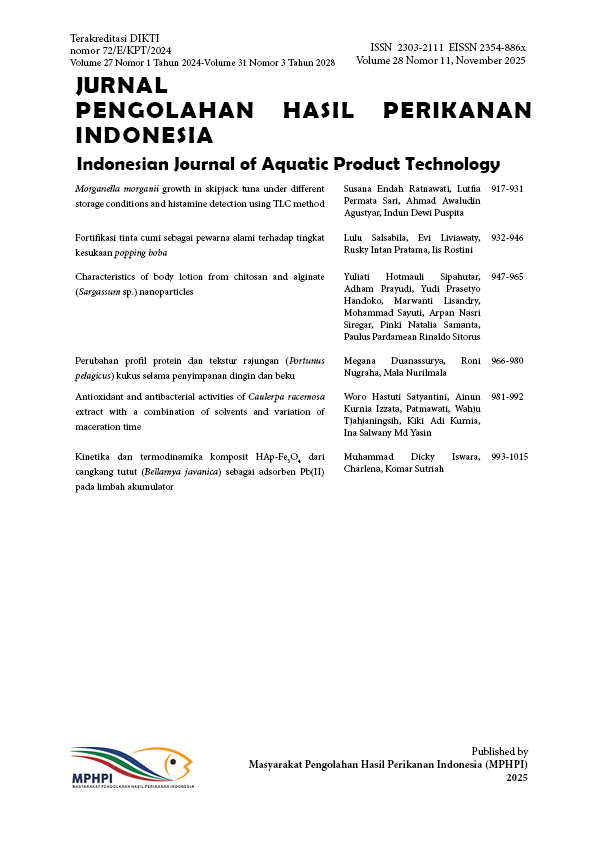Hydroxyapatite Production from Cuttlebone as Bone Scaffold Material Preparations
DOI:
https://doi.org/10.17844/jphpi.v22i1.25869Keywords:
hydroxyapatite, calcination, calcium oxide, cuttlefish wasteAbstract
The increasing production of cuttlefish has been associated with the increasing of by-product waste particularly cuttlebone. Cuttlebone is known to contain an inorganic element in form of calcium carbonate(CaCO3) which can be utilized as a source of calcium oxide (CaO) for hydroxyapatite synthesis. This study was aimed to determine the physicochemical characteristics of the cuttlebone and the optimum calcination temperature for CaO extraction and hydroxyapatite synthesis. This study was divided into three steps. Firstly, analysis of the cuttlebone physicochemical properties; secondly, extraction and characterization of the CaO with different calcination temperature (500°C, 600°C, 700°C for 6 hours); and thirdly, hydroxyapatite synthesis using a combination of hydrothermal method at 200°C 6 hours and different calcination treatments (800°C, 900°C, 1,000°C for 1 hour). The results showed that the cuttlebone contained moisture 3.54±0.11%,
lipid 0.32±0.19%, protein 4.78±0.23%, carbohydrate 5.29±0.02%, and ash 89.61±0.26. The main element of the ash was CaCO3 aragonite characterized by the high absorption at wavelengths of 1,795; 1,507;
1,083; 871; 713 and 700 cm-1. The calcination treatment of 700°C produced the highest amount of CaO. The hydroxyapatite produced with a combination of hydrothermal and calcination temperature 1,000°C
had calcium phosphate ratio (Ca/P) 1.66, crystalline level 90.10%, amorphous level 9.90% and particles morphology of rod-shaped.
Downloads
Published
2019-04-30
Issue
Section
Articles
License
Authors who publish with this journal agree to the following terms:
- Authors retain copyright and grant the journal right of first publication with the work simultaneously licensed under a Creative Commons Attribution License that allows others to share the work with an acknowledgement of the work's authorship and initial publication in this journal.
- Authors are able to enter into separate, additional contractual arrangements for the non-exclusive distribution of the journal's published version of the work (e.g., post it to an institutional repository or publish it in a book), with an acknowledgement of its initial publication in this journal.
How to Cite
Henggu, K. U., Ibrahim, B., & Suptijah, P. (2019). Hydroxyapatite Production from Cuttlebone as Bone Scaffold Material Preparations. Jurnal Pengolahan Hasil Perikanan Indonesia, 22(1), 1-13. https://doi.org/10.17844/jphpi.v22i1.25869












